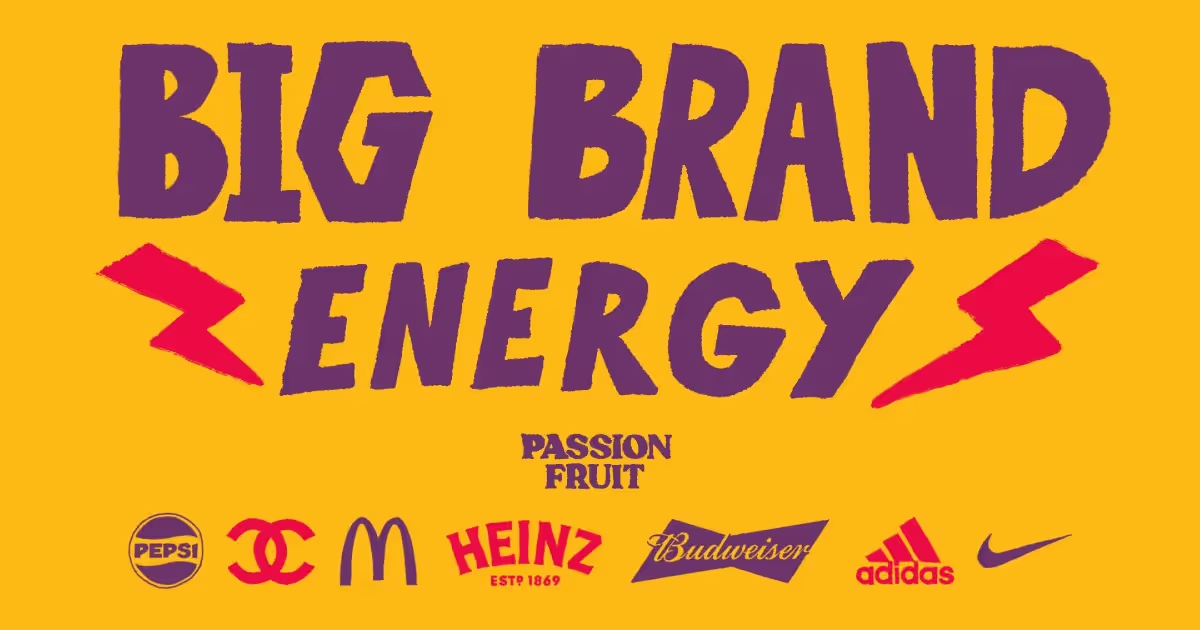“Everyone is talking about brands and branding as a popular marketing strategy.”
Now, let’s be clear: branding is not just a “popular marketing strategy”. Branding is the soil where all of your organisation's efforts bloom. It is the essence of your activity, whether you are aware of it or not; whether you prioritise it or not; whether you are managing the perception of it or not.
If branding is the essence of your company, brand purpose is its driver.
In this piece, I aim to tackle and put an end to the debate of whether “brand purpose is truly valuable”, and provide some practical step-by-steps examples to help your branding efforts move in the right direction.
If you aren’t familiar with the concept of branding, don’t worry - I’ve got you covered. You can learn more about what branding is, its benefits and where you should start here.
Brand Purpose is Essential
True brand purpose is essential for company success, but oftentimes companies partake in ‘purpose signalling’. They may come up with a brand purpose, but don’t necessarily put in the work to tackle the issues they claim to represent. With this in mind, it’s not surprising to see some industry distrust around the values of brand purpose.

A few stats…
Purpose signalling often occurs because businesses understand how profitable brand purpose can be. In its “Strength of Purpose” study, the New-York based Zeno Group surveyed more than 8,000 individuals across 8 countries and demonstrated that when a brand has a strong purpose, consumers were:
- 4.1 times more likely to trust the brand
- 4 times more likely to purchase from the brand
- 6 times more likely to protect that brand in a challenging moment
- 4.5 times more likely to recommend (champion) the brand to friends and family
According to Alison DaSilva, the Managing Director of Purpose and Impact at the Zeno Group, “These findings shed new light and unequivocal proof that the companies who lead with Purpose will see stronger reputation, brand affinity and bottom-line results.”
We see similar sentiments in studies like Porter Novelli’s or even on sites like this one which includes a diversity of sources such as Accenture, Markstein & Certus Insights, PwC, Edelman. Here are a couple standouts to keep in mind:
- US consumers are more likely to have a positive image of (89%), trust in (86%) and be loyal (83%) to brands that lead with purpose. (Cone/Porter Novelli 2019)
- 70% of US consumers want to know what the brands they support are doing to address social and environmental issues. (Cone/Porter Novelli 2018)
- Gen Z is 3x more likely to say that the purpose of business is to “serve communities and society” rather than to simply “make good products and services,” and - compared to other generations - they are more likely to call on brands to make a difference by “using their voice to advocate or speak out” on the most pressing issues of our times. (BBMG & Globe Scan 2019)
So, what’s the bottom line? Brand purpose is a must. The value created by brand purpose goes beyond the product or service a company provides. This “value inflation” will keep increasing as the awareness of world disasters and socio-economic problems continue to rise. As a result, people will turn to companies to be part of the solution.
My take?
Stop being stuck in the past
We can no longer be obsessed with the pursuit of profit over everything else. Sadly (or not so sadly), that’s not how the world’s resources work and we’ve got to accept that.
64% of US adults responding to a survey in 2019 said a company's "primary purpose" should be "making the world a better place". (New Paradigm Strategy Group & Fortune 2019). And I know that number has continued to grow today, especially for generations like GenZ.
According to Lewis Woodward, Global Head of Brand & Communications at real estate company JLL, younger people: "want to join an organisation that gives them a great opportunity to professionally develop and have a fantastic career but they also want to do good. They want to know that their effort is going into something bigger and that bigger is more than a paycheck at the end of the year or a promotion three years down the line. It's being able to go home and talk to your friends and families and your own children about the difference that your organisation is making on the global scale, however big or small that change might be…"
Change is happening gradually, but it is happening. However, the biggest risk for a brand is when they try to deceive the customer. And in today’s world, consumers are becoming more and more discerning.
Purpose isn’t a tool (to fool people)
"Some people think that just printing a label on the pack or talking about it [purpose] is enough and it certainly isn’t. I think people are evaluating things much more thoroughly now" - Nevine El Warraky, Managing Director, Marketing Advisory at Accenture Interactive
Because purpose has been used to drive more growth and profit, it’s mistakenly been labelled as a tool, rather than the main driver of the business.

“It's no longer enough for brands to simply have a purpose. That purpose has to be accessible and attainable through their everyday work and culture," said Julie Arbit, Global SVP, Insights at VICE Media Group. "Brands need to demonstrate their purpose in everything they do and invite consumers to join them. Acting on purpose is what builds authenticity and trust and gets today's consumers to buy in—both figuratively and literally."
What to prioritise: Product or Purpose?
When it comes to prioritising product or purpose, the reality is: you don’t really have the luxury of choosing. Consumers around the world are “feeling the heat”, often quite literally, and the consequences of our unhealthy consumerism habits. This means there is an increased urgency to tackle real issues such as climate change and its violent consequences, such as the loss of biodiversity, plastic waste, to name just a few.
Most businesses are reluctant to do what is necessary because it is perceived as being more expensive. In reality you can execute great brand purpose practices without it being astronomically expensive. I promise it is not as hard as it seems. As someone who increased Adidas’ conversions by 127% on parts of their website while decreasing costs by 38% (without being given any extra budget and yes I’m bragging), I can guarantee you that you are absolutely capable of reaching great results with a bit of proactivity, creativity and an open mind.
Now, time for some crystal clear examples to illustrate exactly what I mean…
The future of brands
A product used to be defined by its characteristics. This was broadened to include the packaging, and then later to encompass the purchase experience as well. Now, brands promise much more. Today a product has to involve a long list of things that consumers perceive to need.
My prediction for the future of brands is that the tangible actions undertaken by a company in carrying out its mission statement and brand purpose, will be part of the brand as much as (if not more) than the product itself.
If done right, you will be benefiting from that transition: most consumers do not believe companies today have a clear and strong Purpose (only 37% do). So, companies are leaving equity on the table.
Ok but how can you do this and not drown in costs?
Focus and prioritise storytelling. Build on your original story, enrich it with success stories, failures, disappointment, hope, obstacles. Make it a more layered story to humanise your brand and transparently showcase the lost battles and the successful ones. People buy from people and highlighting your failures as well as your successes will make your company more relatable and trustworthy.

This can lead to certain brands to share these péripéties by documenting their efforts and dare-I-say start an almost episodic story about how they go about it.
This storytelling in itself will not only encourage the consumers to “vote” and “invest” in your brand purpose and mission by buying the products, but it will also actively involve them in the company story and mission.
Consider investing in community building to get more people engaged and invested in your brand’s purpose. Try opening a forum for suggestions on what you should try next. Oftentimes, the best ideas come from your audience.
People love to give their opinions on the internet, as I am sure you have noticed… So why not capitalise on that and transform it into something valuable for everybody.
An example of this to illustrate
Fake scenario: Starting my air purifier business
Imagine I sell air-purifiers.
The quality of the air inside of homes is said to be 2 to 5 times more polluted than the air outside them. Therefore, my business is actually useful and necessary for the well being of people, especially those living in big cities.
Now let’s say that I have done my best to find local manufacturers that treat their employees well, and that, although the material used to manufacture these air purifiers is not the best (lots of plastic), I am very transparent about it in my communications and marketing and vow to upgrade as soon as my company reaches a more stable revenue stream.
The will to want to do better is important too.
Although finding local manufacturers may increase my prices, it’s not an issue. 13% of consumers would pay 31-50% more for products or services if they believe your business is making a positive impact on the world (Source: Customer Thermometer). On top of that, 92% of Gen-Z and 90% of Millennials said they would act in support of a purposeful brand.
Purpose of my business
I have a business, now on to purpose.
I decided that my purpose is to fight plastic pollution.
You might be wondering, ‘Why not air pollution since we sell air purifiers?’
Sure, it seems logical, but since the biggest problem in my company is the plastic used to make my air purifiers, I am hoping that by fighting against plastic pollution I will learn enough about it to find a solution and become more sustainable.
If you are struggling to do better, the data in this study uncovered the 8 key attributes identified as the most important elements of a purposeful brand:
- Fair treatment of all employees
- Products or services that reflect the needs of people today
- Ethical and sustainable business practices
- Support for important social causes
- Creation of new job opportunities
- Diverse & inclusive culture
- Issue advocacy
- Strong set of values
According to Erinch Sahan, Chief Executive of World Fair Trade Organisation: "I think [purpose] requires a deep-rooted commitment that goes far beyond the sort of day-to-day of what's in trend now and what consumers are paying attention to, but looking at tomorrow's issues and seeing down the line what impact you can have."
Nevine El Warraky, Managing Director, Marketing Advisory at Accenture Interactive, concurs.
"Living the purpose," she explains, equates to "walking the walk, making sure that it translates all the way through to the supply chain, to the manufacturing, to whatever it is you’re doing behind the scenes that your consumers and customers do not see.”
Walking the walk
Ok so I have my brand purpose… but how do I actually tackle plastic pollution?
This part - the execution part - is where a lot of brands fail. Now, big multinational corporations really have no excuse, but I can empathise with smaller brands. These are hard battles to tackle, and when you don’t have spare resources at your disposal or the money to do research, it can be quite daunting.
That said, there is a solution to this problem: start small.
Alright, back to the fake scenario: because I am ignorant about the subject of plastic pollution, I will start with something small and actionable: help all of my city to stop using, or even ban, plastic straws. I therefore get a small percentage of my team (fulltime or partime) to brainstorm and document the whole process, with all of our mistakes, our failures and hopefully, our successes.
- We actively post this story on our social platforms and encourage anyone in the audience to give us advice, ideas or resources that might help us better tackle the problem.
- We consistently show behind-the-scenes footage. The more of an audience we attract to our purpose and our cause, the more likely people are to purchase from and recommend us. They’ll buy because they want to help out in our endeavours.
- Because our product is a good product, people will recommend it because they didn’t realise how badly they needed an air purifier until they got one.
If done well, this all becomes a loop that feeds itself. Even if we aren’t necessarily experts, our trial and error and our authenticity attracts and educates our community.
Eventually, my team successfully bans plastic straws in the city. What will we do now? Ban plastic straws from the whole country? Or tackle something bigger?
I personally find that very exciting: to see your company not only grow on the back of the purpose you are fighting for, but also profiting immensely from these efforts and getting free help from the community that is slowly attracted to your persistence and consistency.
Even if you start small, you never know where it can lead.
A Shared Vision
This might seem far-fetched or even impossible - but I can assure you that this idea is far from impossible and quite frankly way closer than you would imagine, if not happening already.
The best thing is that this way of thinking is not just mine: 83% of the 8000 global consumers studied in the “Strength of Purpose” said companies should only earn a profit if they also deliver a positive impact.
The imagination is a powerful tool that we have, quite frankly, been educated out of. I strongly suggest you look at this as a lost opportunity and start to dare more.
It’s only costly (or at least will be) if you fake it
It’s not costly to have a brand purpose. It’s only costly if your brand purpose is performative. If you truly live and breathe your brand purpose and actively aim to achieve it, the “cost” will be outweighed by the benefits.

We must challenge the narrative that caring for a cause and actually doing something about it isn’t profitable, because it is. Having a brand purpose just asks for commitment and riding a learning curve which most organisations are apprehensive to undertake.
75% of executives at purpose driven companies tell us that the integration of purpose creates value in both the short term and the long term. Moreover, 73% of business leaders say that having a well-integrated purpose helps their company navigate disruption. (EY 2017)
Conclusion
Branding isn’t a “tool”, but the essence of your company. And it should feed into every one of your marketing efforts. Whether you are data driven or more of a creative marketer, nothing takes away from this truth: the quality of your branding is equated to the soil in which you plant your marketing strategy’s seeds (the more “KPI driven” and “concrete” practices). Branding nurtures, drives, protects and inspires every aspect of your business.
A brand purpose is a key part of a great brand strategy. It drives all your actions and ensures you are on the right path. Right now, the “money-driven mentality” is normalised in today’s society.
But you cannot hope to achieve the growth that a great branding strategy can provide by manufacturing a fake purpose that you don’t believe in, hoping for a quick win. However, you also cannot look at purpose as this “inconvenience” that needs to somehow fit into a “win win” situation.
It is important for me to accentuate the following: there is nothing wrong if you want to start your own business and live super comfortably from it. On the contrary, that is not what I am saying, there is a nuance in what I am arguing: if you do want to build a long lasting, scalable, huge and successful brand, then your purpose - the art of giving, of improving, of mending life ought to be at the heart of everything you do.
And the extra cash you get from your successful activities should only amplify your efforts and positive results for the rest of society.
If you get that right, you will notice that everything you ever wanted (the comfort, the material gains, the reputation) will flow towards you naturally and effortlessly. My true definition of a win-win.
Provare per crederci.







